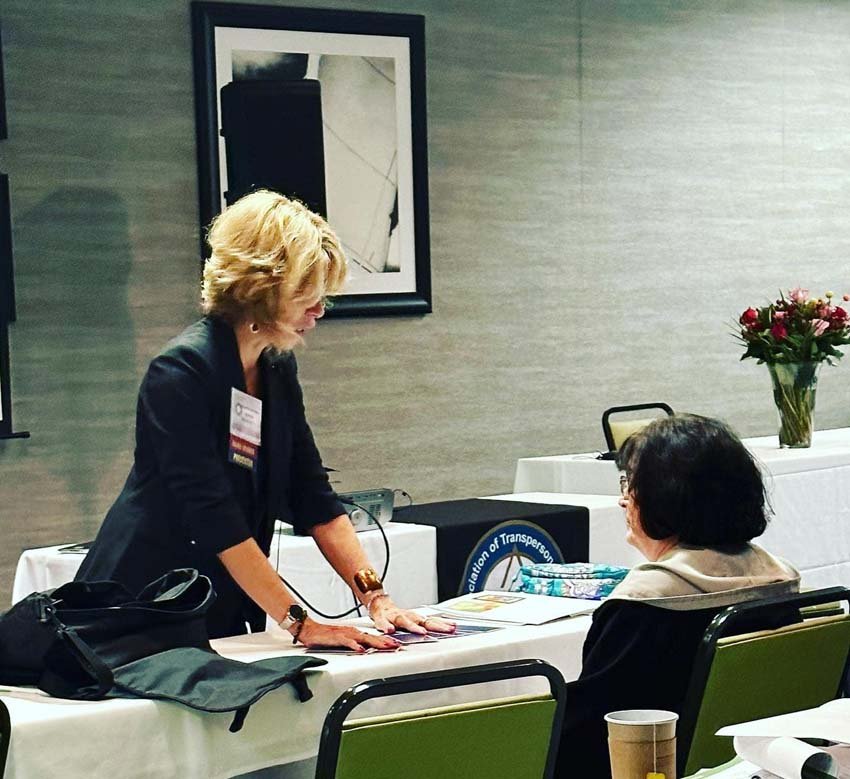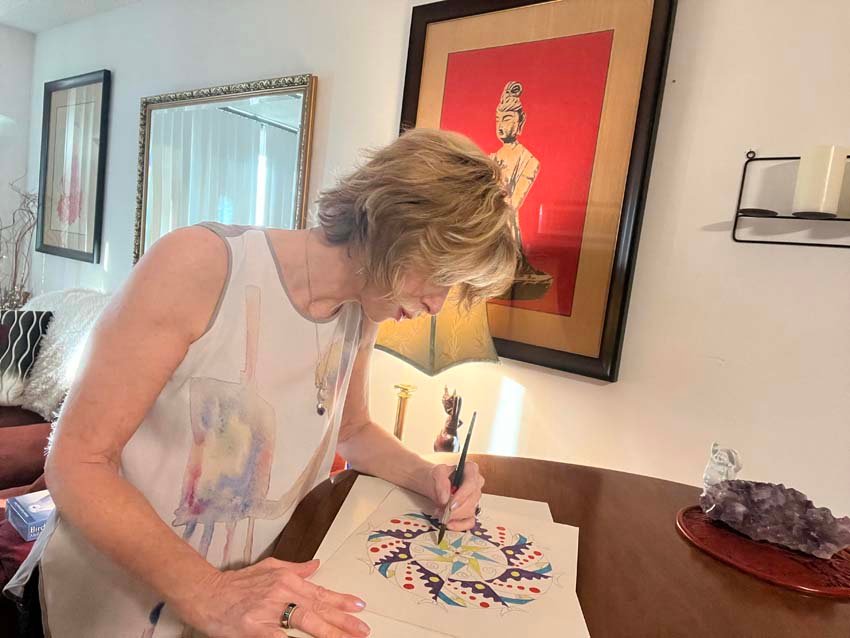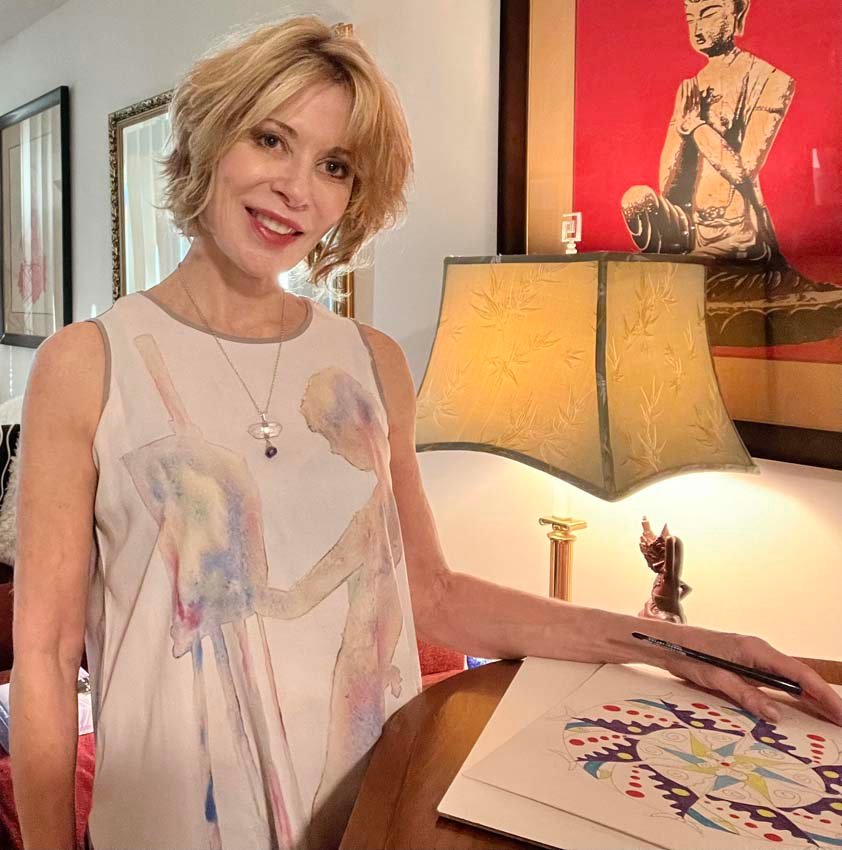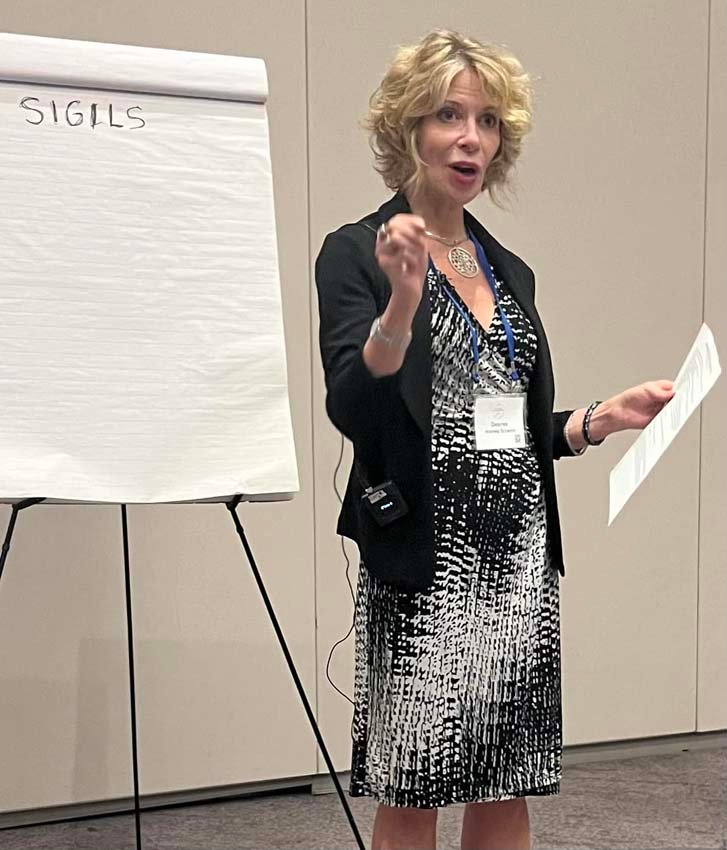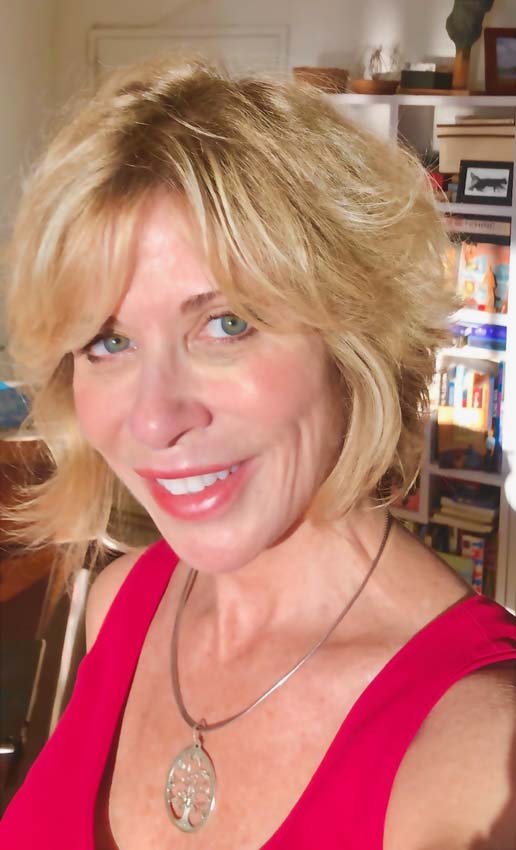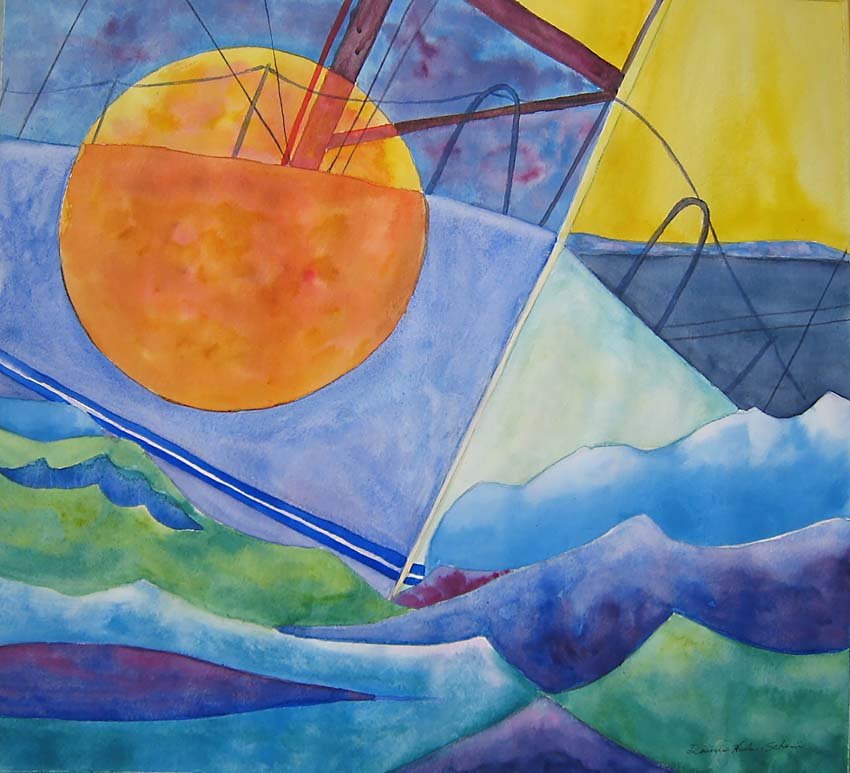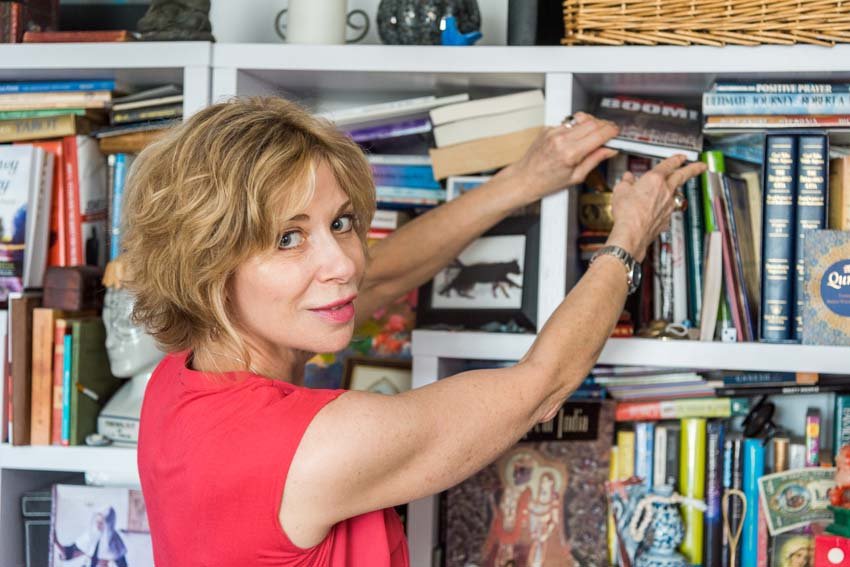+ By Desiree Smith-Daughety + Photos courtesy of Desiree Holmes Scherini
Someone sits, maybe at an easel or at a table, and concentrates on taking a deep breath, and then exhaling. This pattern is repeated several times, and soon, this individual experiences the sensation of the body relaxing, tension releasing and departing, making way for the mind to clear any noise. Next, this individual picks up a medium already at hand—maybe it’s a paintbrush, a pencil, a stick of pastel, or a nub of chalk—and applies it to a canvas. The color and the imagery applied to that canvas express the words and emotions of this individual’s innermost being.
This is a taste of meditative art.
Desiree Holmes Scherini blends her wellness and artistic interests into her work. She has a bachelor’s degree in psychology and training in hypnotherapy and life coaching. She is also a professional artist and art instructor and took part in a city committee that recommended establishing the Annapolis Arts Alliance and the Annapolis Arts District.
Currently based in Washington, DC, Scherini remains active in Annapolis. She has taught traditional art classes, including painting with various mediums (oil, watercolor, pastel, acrylic) in both representational and abstract styles, at Maryland Hall, at Anne Arundel Community College (AACC), and at county senior centers, as well as teaching plein air painting. She created and taught a five-week course, Meditative Art, and a mandala-making class at Maryland Hall. Plans are in the works to offer Meditative Art through Zoom, on which she has also continued teaching for AACC.
Scherini incorporates meditative art and art therapy into her practice, guiding clients in using art as a means of processing and expressing deep-seated thoughts and emotions. “As an artist and hypnotherapist, meditative art came into being in my practice as a way for me to combine my passions,” Scherini says. “It’s not [a] new [technique] . . . but it’s a creative, fun outlet. People love art, and it’s fun for individuals who can use it as a way to segue into mindfulness, and vice versa, into artistic expression.”
When working with a client, she might start with a guided meditation about art or creativity and then let the person create work based on that meditation. This often involves interesting “aha” moments. An individual must make decisions, such as whether to paint the problem, solution, or both. Should blue be used, or another color? In the style of Vincent van Gogh, or something more abstract? This can lead to how the feelings, thoughts, and emotions might translate to a client. “It’s an alternative way to communicate and see into their own subconscious if they can’t use words,” she says. “They could paint what’s going on or use the imagery to look at as a focal point, such as a solution to an issue they’ve been having.” Individuals can use such images to help identify problems and solutions. The same image can be seen in different ways by different people and interpreted according to their own life experiences.
One of Scherini’s influences is Swiss psychologist Carl Jung, who delved deeply into the interplay of the subconscious and archetypes, including the archetypes in tarot imagery. She presented a workshop at a hypnotherapy conference on how the imagery used on tarot cards could lead into the subconscious. Her ideas and the workshops she creates are usually based on something she wants to learn more about, incentivizing her to turn the subject into something she can present or teach to others.
“People come for hypnotherapy—whether it’s biting nails or trauma—and it’s usually something they can’t get past, so they come to ‘try’ hypnosis,” she says. “Like creative artwork, even representational, every piece has its own personality, just like every client. So it’s never boring. I find the work always very interesting.”
Scherini offers her clients hypnotherapy, life coaching, or a combination of the two. “I might ask them if they want to try using some art to see what it reveals,” she says. “The response depends on the individual’s personality. Some are straightforward and don’t want any ‘woo woo’ stuff. Others are open to combining metaphysics with practical work.”
She may incorporate a deck of tarot cards, throwing a card down and explaining the card’s traditional meaning before inviting the client to make a story about it, gaining insight from a different way of thinking about a problem. She’ll coach them to find their best answer or solution and might then offer some pens to draw their problem, however it looks to them. With the work that her clients produce, she’ll guide them to delve further into its meaning, such as what a shape or color means to them.
“The client can then explain the meanings of their work,” says Scherini. “It’s like speaking in a different language, moving from the subconscious into a point of being able to verbalize what’s going on within them.” The color blue may represent a comfortable and happy feeling, while another individual may see it as denoting sadness.
Then comes the work of the client finding a solution. “I can help them move into [an altered] state, in which they’re super relaxed and focused, and have them draw a solution and how they can get there, identifying their path forward and desire and wanting for change,” she says.
Scherini views art in general as a meditative practice, finding that whether she’s drawing or painting something realistic, imaginary, or abstract, the act of creating feels similar to being in a meditative state that’s hypnotic—a relaxed, focused mental state. “Being super-focused is being mindful,” she says. “In artwork, you’re in it, if that makes sense, and you get really involved and everything else goes away, and your brain-wave state goes into a state of meditation. It’s good for you but also opens the subconscious.”
For more information,
visit linktr.ee/DesireeScherini.
